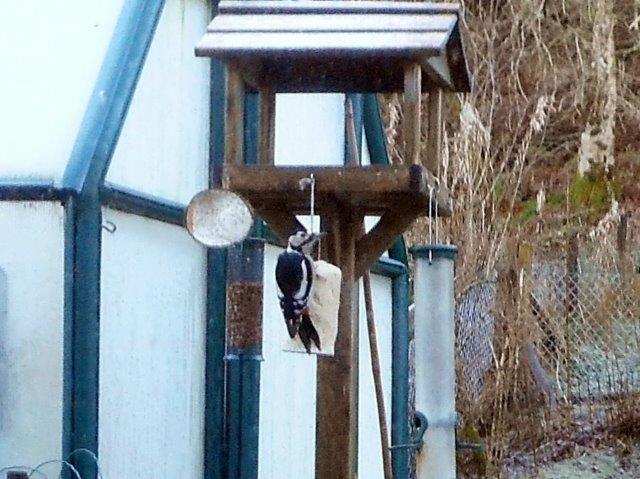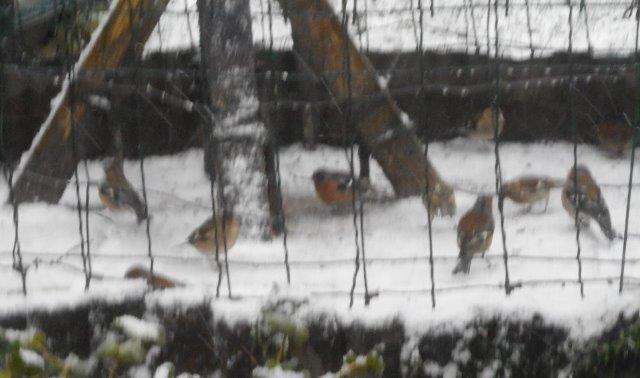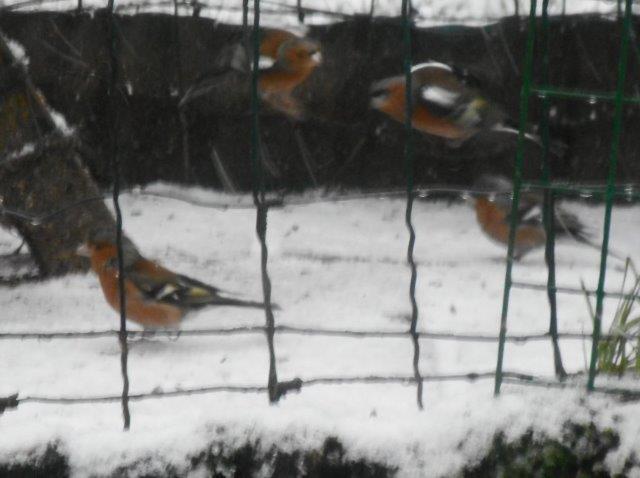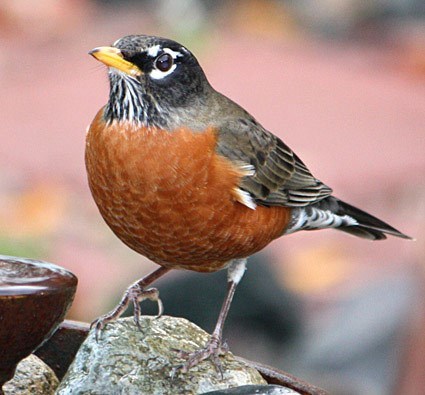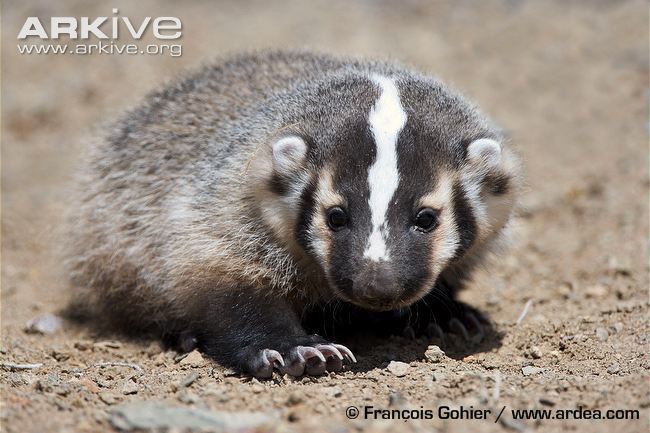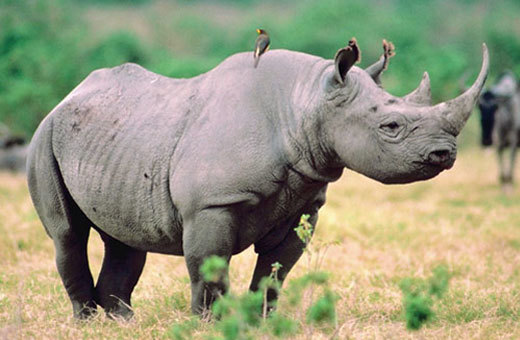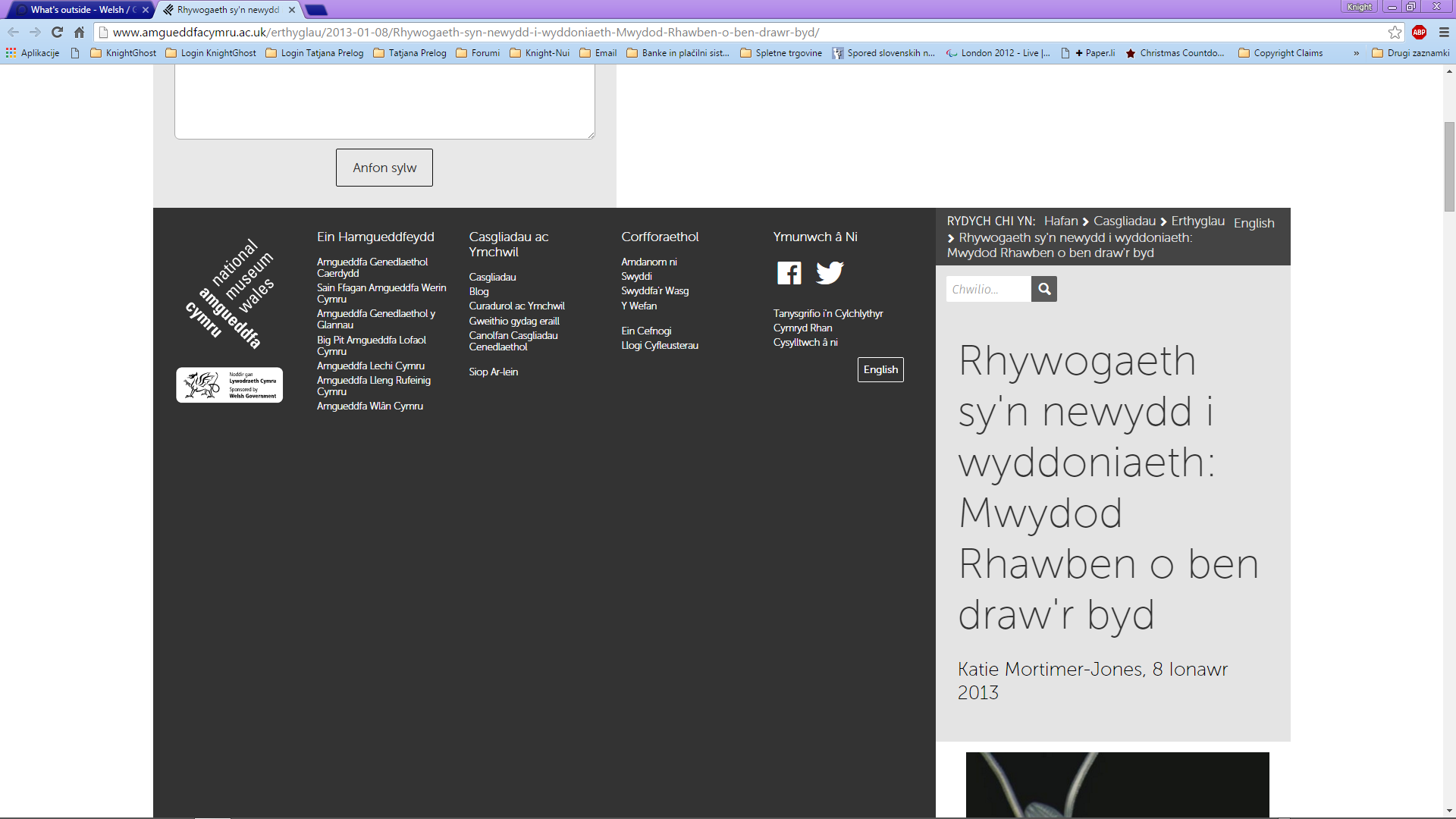Lovely name, pretty fungus. It looks hideously poisonous to me, so does it deceive by being good to eat? Or is the implication that it looks lovely and is deadly? That, actually is true of many things!! (And some people!)
I wouldn’t fancy eating an amethyst deceiver either, name & colour both ring alarm bells, but I’ll happily eat an aubergine (egg plant/planhigyn wy)!!
Ah, us oldies remember the ‘purple people eater’.
Maybe surprisingly the Amethyst deceiver is considered fine to eat (don’t think i will bother).
For the nature lovers i find S4C are now repeating ‘Iolo yn Rwsia’ (which i had not seen before).
Keeps me aware of how much vocab there is yet to learn.
Cheers J.P.
Guto Gwningen on S4C would give you quite a lot!
Mae bwrw eira yma heddiw! However, Stella would hardly agree as it is so fine and slow and little that it has hardly even dusted the frosty ground! So, no pictures!!
However, yesterday, I was at the sink, looked out, ran (well walked quickly) to camera, managed to get it out of case and point it. This is best result:
I think it’s a female greater spotted woodpecker. My Geiriadur isn’t very good for this. It gives cnocell y coed or tyllwr y coed for woodpecker but I can’t find any mention of varieties thereof!!
I agree: Cnocell fraith fwyaf benywaidd.
From the Oxford ramble today.
Ffwng gyda enw ‘dead man’s fingers’ yn saesneg (with my live finger for scale).
Bwncath - Buzzard (distant in a tree but the only opportunity).
Cheers J.P.
Envy!! We get quite a lot, but usually in totally impossible situations for pics… hovering over narrow bendy road is most common!! I love raptors! What I snapped yesterday afternoon was actual real snow. I gather even Kent has it, so ours is nothing special and not thick like @stella’s. However:
and
Not good, but showing our unhappy chaffinches. We took pity and put food on top of the nasty cold whitestuff they were trying to peck through!!
Oh, mae ddrwg gen i - asgell fraith yn yr eira. Not sure of the plural!!
Are you sure that’s a buzzard? Or is the word used differently in the UK than it is in the US? Here there are sharp distinctions between buzzards and other types of raptors. Your photo (which I love!) looks more like some sort of hawk. Just wondering.
Thanks Sionned, i’m always happy to be questioned as mistakes are easy. I’m also happy for others to say what they think.
We have only one year round resident Buzzard and when it flew away the tail shape is a good clue, but as ever i still hope to get a better photo (true for today’s image).
Llwyd y gwrych - Dunnock.
Cheers J.P.
It’s called a ‘buzzard’ here, but it would be a “hawk” in the US. Same family as red tailed hawk. Am I right in thinking that in the US, you use the word ‘buzzard’ for your Turkey Vulture or is it something else?
Certainly the most common buzzard around here is the Turkey Vulture (or Turkey Buzzard), but there are others. Such as the California Condor, I think.
Good catch, I noticed that too. In the US Buzzards are carrion eaters rather than birds of prey.
An American “Robin”
An American “Badger”
An American “Hamster”
Two nations divided by a common language.
I love this thread…!
Anyway, for anyone advanced enough or committed enough to read academic(ish) articles about the natural world (as well as loads of other subjects), there’s a few articles on the Amgueddfa Cymru (National Museum of Wales) website here: http://www.amgueddfacymru.ac.uk/erthyglau/
I particuarly noticed because I looked up “mwydyn” on google, and got an article about a brand new species: http://www.amgueddfacymru.ac.uk/erthyglau/2013-01-08/Rhywogaeth-syn-newydd-i-wyddoniaeth-Mwydod-Rhawben-o-ben-drawr-byd/ but there’s other more recent ones including (for any gardeners) an in depth look at the ghost slug: http://www.amgueddfacymru.ac.uk/erthyglau/2014-08-11/Cyrhaeddiad-Hirfaith-yr-Ysbrydwlithen-/
These are academic articles with a layman twist, so don’t be disheartened if they are gobbledigook to you, but if you’re interested in the subject matter, they’re worth looking at!
Oo, interesting, thanks!
In a similar spirit - I think I’ve mentioned this before but worth mentioning again- here’s a link to the latest, January 2016 issue of the online magazine from the Edward Llwyd natural history society.
Short articles, with lots of pictures, again interesting if anyone is interested!
And here’s a link to all the previous issues.
http://www.llennatur.com/Drupal7/llennatur/?q=node/3
Diolch i ti. I’d never come across this before. Looks very interesting.
NB ****COPYN ALERT **** in the latest issue (& I guess maybe the back issues)
Thanks @Iestyn I can’t make the 2nd link work though? Other 2 are opening up as expected.
oh Iestyn, this higlights two of my many problems, (how to learn Welsh faster, and how to keep up with all the scientific papers released).
This is something i had not heard about and maybe the icing on the cake is the map of recorded finds which has a lone 1 close to the Oxford group ![]()
And thanks for the other posts folks, the American hamster was particularly interesting (i had heard they were bullish).
Cheers J.P.
You’re welcome, good to know someone finds it useful! And thanks for the spider alert!
Yes, it is a very interesting magazine, with contributors from all over the place sending in photos of all sorts of stuff.
I wonder if @ramblingjohn has ever thought of sending anything in to it? His photos are certainly more than good enough, and deserve a wide audience!
2nd link works but it might be it’s not adapted to all browsers and screens. On my, for example the side line is where the text is written but the main part of the screen is grey and it looks like the bottom frame (part where there should be datas about who’s teh owner of the page, copyright, some useful links … etc, is extended all the wax to the top of the pgae. This means coding would have to be a bit corrected though.
For the reading … well, I think this all is a bit too much for me yet, sorry.
Yep, @ramblingjohn’s photos are magnificent.
I agree too:)
They are lovely:) At first, I thought they were bullfinches. Bullfinches were very common in Belarus when I was a child, I used to make feeders for them and for blue tits, but now they’re gone for some reason. It’s very sad. Winters are not the same without them…
